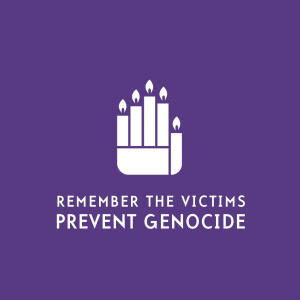6.1 Learn About Genocides
VIDEO: Raphael Lemkin Defines Genocide
In the following video Lemkin explains how and why he developed the concept of genocide.
The term “genocide” was first developed by Polish lawyer Raphäel Lemkin in 1944 in response to the actions of the Nazi’s during WWII and the mass murders of other groups throughout history (United Nations Office on Genocide Prevention and the Responsibility to Protect, n.d.–a; Genocide: An introduction, n.d.). For years Lemkin lobbied the United Nations to recognize genocide as a crime under international law. This occurred in 1948 with the adoption of the U.N. Convention on the Prevention and Punishment of the Crime of Genocide (1948) (Cassin, n.d.; United Nations , n.d.-b). Although the convention was ratified by only 149 States, all nations are “bound as a matter of law by the principle that genocide is a crime prohibited under international law” (United Nations , n.d.-b, para. 2).

VIDEO: What is Genocide?
The following video provides a brief introduction to genocide and why genocide education is important.
DEFINITION OF GENOCIDE IN THE U.N. CONVENTION
The current definition of Genocide is set out in Article II of the Genocide Convention:
Genocide means any of the following acts committed with intent to destroy, in whole or in part, a national, ethnical, racial or religious group, as such:
(a) Killing members of the group;
(b) Causing serious bodily or mental harm to members of the group;
(c) Deliberately inflicting on the group conditions of life calculated to bring about its physical destruction in whole or in part;
(d) Imposing measures intended to prevent births within the group;
(e) Forcibly transferring children of the group to another group.
(The content of this text box is attributed directly to the United Nations (n.d.-c). Genocide Convention Fact-Sheet. UN.org.)
VIDEO: International Law in Action II – 1.3 Core Crimes Genocide
The following video from the Centre for Innovation at Leiden University, provides an explanation of the International Criteria for genocide.
Click the link below to learn more about genocide:
Genocides have been occurring since the beginning of human civilization, with one of the earliest known examples being the destruction of Carthage at the end of the Third Punic War in 149–146 BCE (Kiernan, 2004). Some genocides are more widely known than others, usually due to death tolls, when/where they occurred, and the amount of existing documentation and evidence detailing what occurred. One of the central characteristics of genocides is the targeting, vilification, blaming, and scapegoating of people due to perceptions of difference, typically tied to religious affiliation, sexual orientation, gender identity, and certain constructions of race and ethnicity (Grobman, 1990). Once a specific group has been successfully targeted and labeled, the next step in the process is dehumanization (Roth, 2010). Successful dehumanization efforts facilitate the process of systematically removing the identified population through sterilization, deportation, and/or mass execution (Baum, 2012). The following parts of this chapter provide a brief background on four of the most devastating genocides in human history: The Armenian Genocide, The Holocaust, The Rwandan Genocide, and the Genocide of Indigenous Peoples in Canada. Unfortunately, there are many more.
VIDEO: Holocaust Lecture Series
The following video explains the importance of memorializing genocide to educate and prevent similar events from happening again.
BCE stands for ‘Before Common Era’. As with its precursor, ‘BC’, these ways of measuring time reflect a Eurocentric ‘Christian’ perspective that does not appropriately consider the multitude of different ways that the notion of time has been understood by cultures globally.
Dehumanization "is the redefining of targets of prejudice and violence by making them seem less human…than other people…[typically through the use of] terms like 'animals' and 'vermin'" (Hamby, June 21, 2018).

